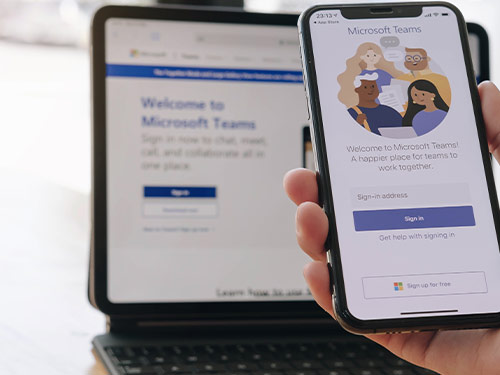Improved productivity is the big promise of “connected workspace,” Metrigy’s term for tools that allow employees to accomplish, collaborate on, and manage content-and project-related work in a self-contained workspace. And of course AI is beginning to play an integral role.
Connected workspace apps can improve productivity by bringing together project and task management with knowledge bases and document repositories, along with communications and collaboration apps, in a single interface. That means no more time wasted application switching, among other productivity benefits. AI, especially generative AI, can facilitate and ease work tasks.
Connected Workspace and AI Adoption
To understand the state of adoption for connected workspace applications, including AI use, Metrigy conducted two studies: one to understand how companies perceive this technology from a business-level perspective, and the second to assess end use. In our Connected Workspace & Collaborative Work Management: 2024-25 study with IT leaders and other business stakeholders at 157 companies in North America, we found that 58% of companies already have adopted a connected workspace app. Of those companies, nearly 32% have allowed access to the AI capabilities available with these apps. End user adoption, measured in the second study, mirrors what we found at the company level: Slightly less than one-third of 171 end users studied are actively utilizing generative AI capabilities within their connected workspace apps.
Of those end users not using AI today, 53.8% say their companies haven’t enabled AI features. Interestingly, 48.1% of users say AI capabilities are available but aren’t relevant to their jobs. This suggests that while AI holds promise, its implementation and usefulness can be highly dependent on how well it aligns with the specific needs of different roles.
AI-Powered Features in Connected Workspace Apps
Connected workspace apps are available from a variety of vendor types, from pure-play startups to well-established providers in the areas of communications and collaboration, content collaboration and management, productivity, and task/project management. As such, AI features in connected workspace apps is quite diverse, depending on vendor focus. Here are some example capabilities that are either available now or coming:
- Auto-Generated Custom Fields and Task Summaries – These features streamline project management by automating updates and summaries, reducing manual input and improving project tracking
- Personalized Digests – Users receive tailored updates on recent activities within their workspace, ensuring they stay informed without being overwhelmed
- Writing Assistance – AI aids in drafting content deliverables and notes, enhancing productivity and ensuring consistency in style, tone, and information across documents
- Conversational Queries – Users can use conversational language when searching for information, whether across projects or knowledge bases, making information retrieval more intuitive and accessible
- Coding Assistance – AI supports coding tasks by providing suggestions or generating code, facilitating faster development and reducing errors
- Automated Workflows and Automations – These tools streamline routine tasks and processes, improving efficiency and allowing users to focus on more strategic work
- Text-to-Image Conversion – AI converts text into tables, graphics, and other visual elements, aiding in data presentation and analysis
- Goal and Objective Recommendations – AI analyzes project data to suggest goals and objectives, helping teams stay focused and aligned
- Scenario Planning – By analyzing project data, AI helps teams plan for various scenarios, enhancing decision-making and risk management
- Insight Generation and Chart Creation – AI automatically surfaces insights and creates charts from spreadsheets and reports, facilitating data-driven decisions
The Most-Valued AI Capabilities
In the Connected Workspace & Collaborative Work Management: 2024-25 study, auto-generated summarization bubbled up as the top value of generative AI for both content-related activities (nearly 90%) and projects (83.3%). Content summaries can be particular valuable when there’s a high level of complexity and/or a considerable volume of documentation or notes to wade through, especially if the summaries include actionable insights for users to follow. For project management, summarization aids in keeping stakeholders informed and aligned without the need for sifting through a complex plan.
Regarding AI-powered search, end users find universal search capabilities across all apps within a connected workspace to be slightly more valuable than conversational AI. Universal search helps users quickly find relevant information across disparate tools, which can be a significant time-saver compared to the more interactive, but sometimes less precise, nature of conversational AI.
Looking Ahead
As AI technology continues to evolve, connected workspace app providers will add more and more advanced functionality into their products. The key to maximizing AI’s benefits will be ensuring that its features align closely with user needs and job functions. For organizations, this means not only layering in AI technologies, but also providing the necessary support and training to help users leverage these tools effectively. Ultimately, the goal is to create a workspace where AI enhances productivity, provides actionable insights, and supports a more efficient and collaborative working environment.





